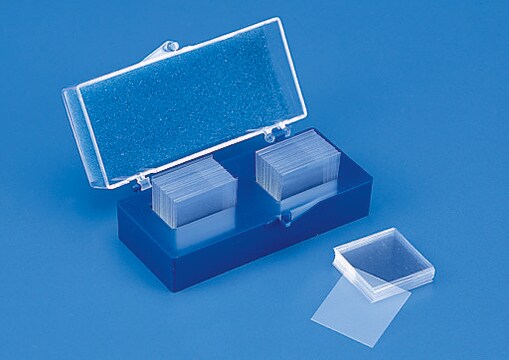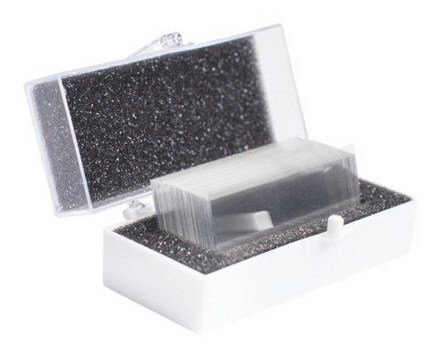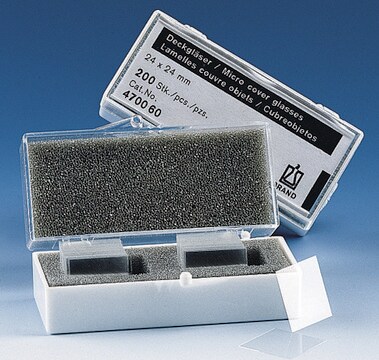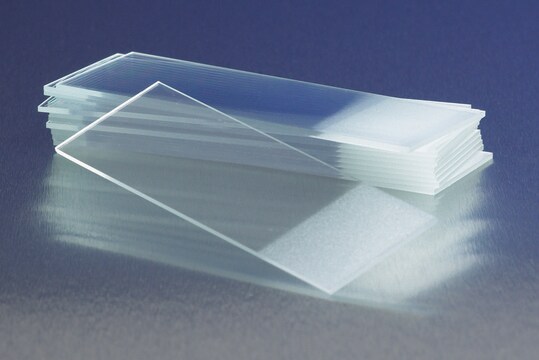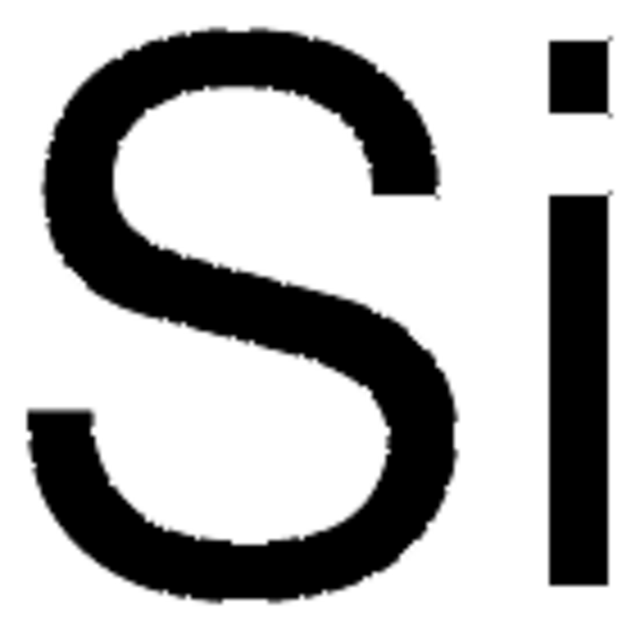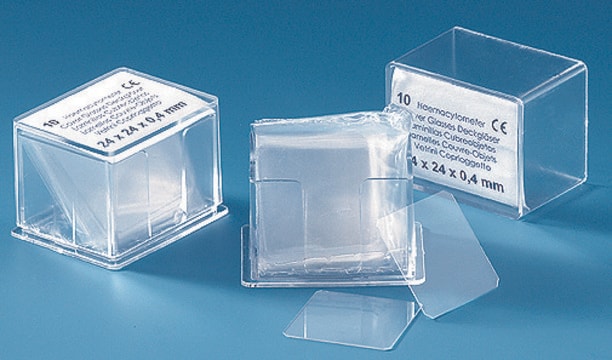643254
Gold coated glass cover slip
99.999% (Au), layer thickness 100 Å, L × W × thickness 22 mm × 22 mm × 130-170 μm, square
About This Item
Produtos recomendados
Nível de qualidade
Ensaio
99.99% (Ti)
99.999% (Au)
C × L × espessura
22 mm × 22 mm × 130-170 μm, square
espessura da camada
100 Å
índice de refração
n20/587 1.523
ligação da matriz
Titanium, as adhesion layer used to bind the gold to the borosilicate glass cover slip
cadeia de caracteres SMILES
[Au]
InChI
1S/Au
chave InChI
PCHJSUWPFVWCPO-UHFFFAOYSA-N
Procurando produtos similares? Visita Guia de comparação de produtos
Categorias relacionadas
Características e benefícios
Outras notas
Informações legais
Código de classe de armazenamento
13 - Non Combustible Solids
Classe de risco de água (WGK)
nwg
Ponto de fulgor (°F)
Not applicable
Ponto de fulgor (°C)
Not applicable
Escolha uma das versões mais recentes:
Já possui este produto?
Encontre a documentação dos produtos que você adquiriu recentemente na biblioteca de documentos.
Os clientes também visualizaram
Artigos
1-Adamantanethiol (1-AD), an example in this spectrum of molecules with distinct chemical and physical properties, forms self-assembled monolayers (SAMs) on Au{111} that are displaceable when exposed to other thiolated molecules from solution, vapor, or contact due to weak intermolecular interactions in 1-AD SAMs.
Nossa equipe de cientistas tem experiência em todas as áreas de pesquisa, incluindo Life Sciences, ciência de materiais, síntese química, cromatografia, química analítica e muitas outras.
Entre em contato com a assistência técnica
